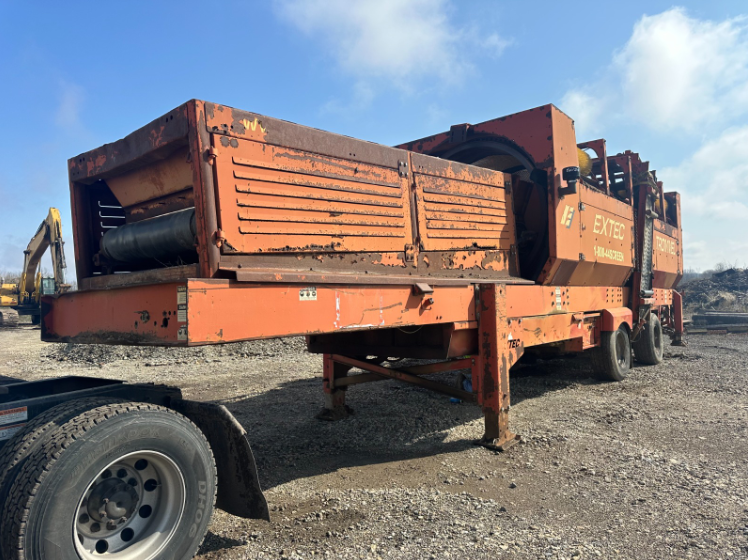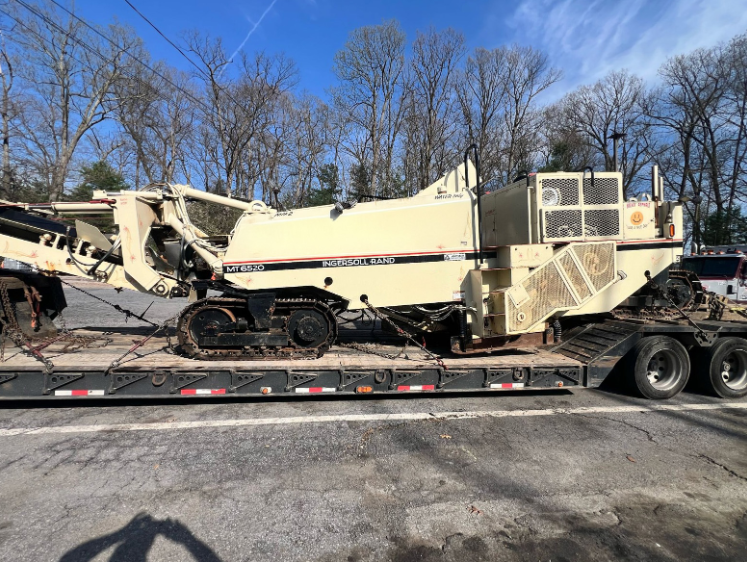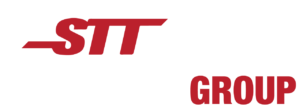
When you’re shipping heavy equipment from point A to point B (and possibly via points C and D), there’s a lot to think about—like weight, dimensions, distance, route restrictions, permits, loading equipment, and delivery timelines. Not to mention less obvious factors including the condition of machinery, bridge clearance for tall loads, and escort vehicles.
The big question is, how much does all of that cost you—the customer?
Here at STT Logistics Group, naturally, one of the most common questions we encounter is: How much does it cost to ship heavy equipment? The answer certainly isn’t straightforward, since several factors influence the final price but we’ll do our best to answer it here. This guide aims to demystify the costs associated with heavy equipment transportation, providing you with the insights you’ll need to make informed decisions.
Rough Pricing Per Mile for Heavy Equipment Transport
Before we unpick into the specifics, let’s address the primary question: cost per mile. On average, as a ballpark range, transporting heavy equipment can range from $1.50 to $5.00 per mile. This variation depends on several factors:, which generally fall into one of the following categories.
- Distance
- Load size and weight
- Route complexity
- Special requirements (e.g. escort vehicles)
Factors Influencing the Cost of Heavy Equipment Transport
Now, let’s go into a bit more detail about the factors that determine the overall shipping cost you’ll end up paying. Understanding these factors is key for accurate budgeting and efficient logistics planning.
Equipment Specifications
As you’d probably expect, the dimensions and weight of the machinery are primary cost determinants. Larger and heavier equipment often needs specialized transport solutions, such as flatbed trucks or lowboy trailers, which can be more expensive.
Additionally, oversized or overweight equipment may require special permits and routing, further increasing costs.
Distance and Route Complexity
The distance between the pickup and delivery locations significantly impacts transportation costs, too. Longer distances generally result in higher total costs, though the cost per mile may decrease when you surpass the thousand mile mark.
Pricing also will be influenced by route complexity, including factors like road conditions, traffic congestion, and accessibility, can also influence pricing. Transporting through, say, congested urban areas or regions with strict regulations can add to the expense.
Permits and Regulatory Compliance
Oversized or overweight shipments often require special permits, all taken care of by STT Logistics Group, which vary by state and can add to the cost.
Mode of Transportation
The choice between different transportation modes—such as open trailers, enclosed trailers, or specialized carriers—affects cost. For instance, enclosed transport, which offers protection from weather and road debris, does come at a premium.
Conversely, open transport is more common and generally less expensive—this is suitable for equipment that can withstand exposure to the elements.
Fuel Prices and Seasonal Demand
Fluctuations in fuel prices directly affect transportation rates. Additionally, high demand during certain seasons can lead to increased prices due to limited availability of carriers.
Loading and Unloading Requirements
The complexity of loading and unloading processes can influence the final heavy equipment shipping cost. Equipment needing specialized machinery, such as cranes or forklifts, for loading and unloading will incur additional charges. Moreover, if your machinery requires dismantling and reassembling to facilitate transport, this can add to labor costs.
Sample Cost Estimates for Various Equipment and Distances
Below are some illustrative examples of shipping costs for different types of heavy equipment over varying distances. (Please note that these are estimates for illustrative purposes only; actual costs can vary based on the factors discussed earlier.)
| Equipment Type | Distance | Estimated Cost per Mile | Special Considerations | Total Estimated Cost |
| Skid steer loader | 150 miles | $3.75 | Standard transport, no special permits required | $562.50 |
| Bulldozer | 600 miles | $3.00 | Requires RGN trailer due to weight | $1,800 |
| Hydraulic excavator | 1,200 miles | $2.25 | Oversized load, necessitates permits and escort vehicles | $2,700 |
| Mobile crane | 800 miles | $4.50 | Heavyweight and oversized, specialized handling needed | $3,600 |
| Motor grader | 400 miles | $3.25 | Wide load, requires specific routing and permits | $1,300 |

Domestic vs. International Shipping
When it comes to heavy equipment transportation, the logistics landscape shifts dramatically once you cross a border. Domestic shipments across the U.S. may be complex—but they’re nothing compared to coordinating international freight. The cost to ship heavy equipment internationally includes more variables and more paperwork, which often leads to more dollars being spent.
At STT Logistics Group, we help clients navigate this process every day, whether they’re sending forklifts to Guatemala or importing cranes from Canada.
Key Cost Considerations for International Heavy Equipment Transport
- Customs Duties & Taxes
Every country has its own rules. Some require VAT payments, import duties, or proof that the equipment will not remain in the country permanently. - Shipping Method
You may need to use Roll-On/Roll-Off (RoRo), breakbulk, or container shipping. Each has different pricing models. For example:- RoRo: Good for wheeled machinery that can be driven on/off a vessel
- Flat-rack/Container shipping: Best for non-running or disassembled machinery
- Port Charges & Handling Fees
Loading/unloading at the port can incur additional charges, especially for oversized freight that needs cranes or specialized lifts. - Documentation & Insurance
Bills of lading, customs declarations, and marine insurance must all be in place—errors or omissions here can cause costly delays.
Trailer Types and Their Impact on Price
The type of trailer used for heavy equipment transport has a major influence on cost. Choosing the wrong one can lead to unnecessary expense—or even worse, damage to your machinery or delays to the haul. At STT Logistics Group, trailer selection is a key part of our quote process, and we make sure it’s always the right fit for the freight.
Let’s look at how trailer types affect your bottom line:
Flatbed Trailers
- Best for: Small-to-medium machinery (under 8.5 ft tall)
- Pros: Widely available, easy to load, cost-effective
- Cons: Limited height and width capacity
- Cost impact: Lowest of all trailer options
Step-Deck Trailers
- Best for: Taller loads that exceed flatbed height limits
- Pros: Extra clearance allows for up to 10 ft height
- Cons: Slightly more expensive than standard flatbeds
- Cost impact: Moderate
Lowboy Trailers
- Best for: Extremely heavy or tall equipment (e.g. excavators, bulldozers)
- Pros: Can handle loads up to 12 ft high
- Cons: Requires specialized loading, fewer units available
- Cost impact: High (but unavoidable for certain machinery)
Removable Gooseneck Trailers (RGNs)
- Best for: Drive-on equipment or non-operational loads
- Pros: Easy ground-level access, excellent for oversized freight
- Cons: Complex setup, can cost more per mile
- Cost impact: High but highly efficient for heavy hauls
Extendable and Multi-Axle Trailers
- Best for: Over-length or out-of-gauge cargo (e.g. cranes, wind turbines)
- Pros: Adjusts to load dimensions; spreads weight legally
- Cons: Requires route surveys, escorts, permits
- Cost impact: Premium pricing due to complexity
Quick Tip:
Choosing the wrong trailer might seem cheaper upfront, but it often leads to delays, damage, or permit violations. Our brokers always align trailer choice with job specs—no guesswork involved.
What It Actually Costs to Ship Heavy Equipment (With Examples)
As we’ve seen, no two jobs are alike when it comes to figuring out the cost to ship heavy equipment. Factors like size, distance, urgency, terrain, and trailer choice can all push that number up or down. But to give you a clearer idea, here are some real examples drawn from the kinds of jobs we handle every week at STT Logistics Group.
Example 1: Two Forklifts from Ohio to Texas
- Distance: 1,680 miles
- Equipment: Two forklifts (72,000 lbs each)
- Trailers: Two RGN trailers
- Special Requirements: Crane loading/unloading at both ends
- Cost Range: $8,500 – $10,000
- Why did it cost that much? RGN trailers, multiple permits, and crane coordination pushed the price higher.
Example 2: Bulldozer from Auction Site to Job Site
- Distance: 350 miles
- Equipment: CAT D8 Bulldozer
- Trailer: Lowboy
- Special Requirements: Auction site pickup with short timeframe
- Cost Range: $2,000 – $2,800
- Cost factors: Quick scheduling and oversized load permit needed
Example 3: Small Excavator Across State Lines
- Distance: 250 miles
- Weight: 18,000 lbs
- Trailer: Flatbed
- Cost Estimate: $850 – $1,200
- Why it’s cheaper: Standard flatbed transport and no permits required
How Can I Reduce the Heavy Equipment Shipping Cost?
The phrase “cheap shipping” certainly sounds attractive—but when it comes to heavy equipment hauling, “cheap” often means risky. That said, there are plenty of ways you can save money on equipment transport without compromising safety or service.
Here are some pointers about how to reduce the cost to ship heavy equipment—smartly.
Plan Ahead
- Why it helps: Last-minute hauls often come with premium pricing.
- Pro Tip: Booking at least a week in advance gives dispatchers more time to find the ideal carrier and trailer at a fair price.
Be Flexible With Dates
- Why it helps: Carriers can bundle multiple shipments, reducing overall cost per load.
- Pro Tip: Letting your broker know you have a delivery window (vs. a hard deadline) gives them more options—and more leverage on rates.
Consolidate Loads
- Why it helps: Two smaller machines might be able to share a single trailer.
- Pro Tip: Ask your logistics partner if co-loading is a viable option based on dimensions, weight, and compatibility.
Choose the Right Trailer (Not the Cheapest One!)
- Why it helps: Using the wrong trailer can lead to delays, damage, or permit violations, which end up costing way more in the long run.
- Pro Tip: Let your broker evaluate which trailer actually saves you money once you factor in safety and compliance.
Know What’s Actually “Special”
- Why it helps: Not every oversized load needs escort vehicles or permits in all states.
- Pro Tip: Work with a team that understands regional regulations and won’t over-order unnecessary (and costly) support services.
Prepare the Equipment
- Why it helps: Clean, drained, and prepped equipment loads faster and safer.
- Pro Tip: If your machine can be driven on and off, it could save you hundreds on crane or forklift loading fees.
Work With a Transparent Logistics Partner
- Why it helps: Clear communication means no surprise fees later.
- Pro Tip: At STT, you get one point of contact and updates every step of the way—from quote all the way through to drop-off.
Why STT Logistics Group Makes All the Difference
Sure, many carriers can quote you a price (and it’s definitely advisable to get a few quotes, if you have the time). But not every logistics firm understands how to move complex freight well—or how to balance the numbers with peace of mind.
At STT Logistics Group, we’ll offer a price and a process.
We have an in-depth understanding of the intricate world of heavy equipment transport because we’ve been doing it day in, day out, since 2015. From construction logistics to long-haul machinery moves, we build routes and plans that respect your time, protect your freight, and deliver results.
Here’s what you get when you work with STT:
✅ A dedicated broker from day one
✅ Customized transport plans
✅ Network of trusted carriers
✅ Real-time communication
✅ Full transparency
There’s a Lot Riding on the Right Quote
If you’ve made it this far, you already know: the cost to ship heavy equipment depends on more than just distance. It’s shaped by what you’re moving, where it’s going, what it weighs, and how well it’s planned.
You also know that there are smart ways to reduce those costs—without cutting corners or taking risks.
So, whether you’re moving heavy equipment for a new project, relocating construction machinery across the country, or trying to ship heavy equipment internationally, we’re here to walk you through every step. And we mean every step—from choosing a trailer to securing permits and escort vehicles.
At STT Logistics Group, we do more than quote jobs. We build relationships, plan with precision, and deliver results.
Ready to get a quote that’s as reliable as the team behind it?
Ggive us a call at +1 (786) 709-9664.








